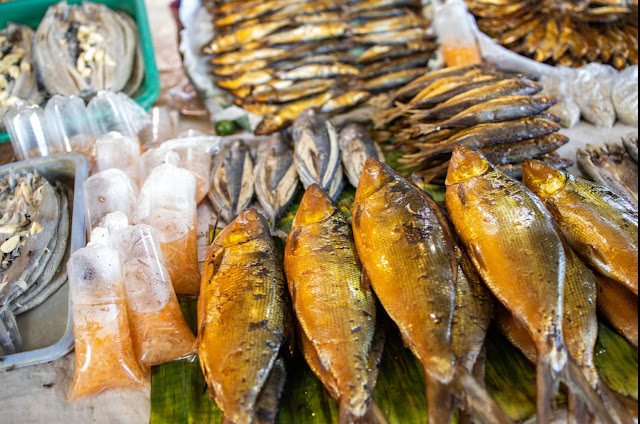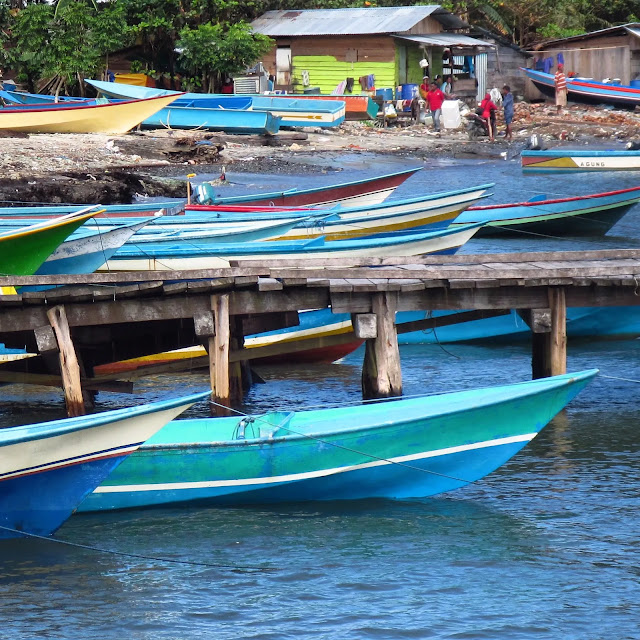Before reaching Buru, we had studied its history, a customary practice of ours before visiting new destinations. It was surprising to discover that this was actually the “Island of Tabu”, a place that had been off-limits to visitors for years as it served as a location for political prisoners.
An island of raw beauty and untold stories, Buru is a testament to the resilience of the Indonesian spirit. It's an emblem of forgotten history and a witness to one of the greatest atrocities of the 20th century.
The third largest island in the Maluku Islands, Indonesia, is situated between the Banda Sea to the south and the Seram Sea to the north, west of Ambon and Seram islands. We have sailed across the northern shores of Seram, taking in some amazing destinations that you only see on postcards. Then we skipped across to Pulau Manipa, a magical stop with pristine reef under turquoise waters. Now we are heading to an Island that changed global history forever.
Hidden amongst Indonesia's myriad of enchanting islands, it continues to echo with the stories of a time best forgotten. This island and its people have seen such turmoil over the centuries. In the 16th–17th centuries the Buru territory was claimed by the rulers of Ternate island and by the Portuguese; both claims were however symbolic, as neither party controlled the island but only visited it on trade matters. Buru traditionally grew cloves, and this lucrative crop was a source of much of its trouble.
 |
| Indonesia was the Dutch West India Companies central hub that controlled the valuable spice trade |
Between 1658 - 1942, the Dutch East India Company and later the Crown of the Netherlands colonized it. The Dutch authorities oppressed the locals and forcibly moved numerous local villages to the newly constructed island capital, Namlea, in Kayeli Bay to work on clove plantations. Then the island was occupied by the Japanese forces between 1942 and 1945. Following the war, Buru remained under Dutch influence and in 1950 became part of independent Indonesia.
 |
| Remnants of the fort once in the hand Dutch West Indies Company |
You would think the people of Buru could now relax and get on with their lives, until, they were part of a larger plan for the Suharto era of 1960s–1970s. Buru was an exile for Indonesia's "communist" political prisoners. These were not just the revolutionaries, but the teachers, journalists, artists, intellectuals, and politicians, a generation of Indonesia’s brightest minds taught to be silent.
Upon us reaching Namlea, the bustling capital of Buru Island, we discovered a vibrant town brimming with activity. The majestic Mosque overlooks the shore, and the daily market is just a short stroll from the dinghy dock. Our visit was to meet up with the Wonderful Indonesian Rally after a couple of weeks exploring remote areas of Indonesia. While we took a more scenic route, the Rally took a more direct route to Namlea. We were excited to reunite with the rally participants and partake in the festivities.
Namlea is situated on a vast bay, with a backdrop of majestic mountain peaks. While not a typical tourist spot, it provides an authentic experience of daily life. Strolling through markets, exploring winding streets, and interacting with locals, mainly by engaging in a game of charades, made our visit memorable. Although not a destination to seek out, Namlea offers essential supplies like fuel and fresh provisions. Our dining experience at a local seafood restaurant was exceptional, with fish so fresh they came straight from the sea.
Today walking through the energetic capital Namlea, it's hard to imagine the tragedies this island has endured. The Becak (rickshaws) shuttle people back and forth along the foreshore, evoking a nostalgic vibe. Besides that, this city resembles many others in Indonesia. Street vendors sell their goods, Warungs buzz with locals enjoying delicious cuisine, and the traditional market boasts the freshest of produce and a variety of Indonesian delicacies.
We indulge in beautiful meals at local restaurants and take coffee in a cafe. The bustling seaport city, known for its stunning Mosque overlooking the waterfront, is a hub for exporting spices that were once highly sought and fought over by the English, Portuguese, Spanish, and Dutch. Today, the locals can cultivate and sell their own spices. The spice trade has long been a vital aspect of life in the Maluku Islands, predating its discovery by the European market. Centuries before, the Chinese had established trade relations with the islanders.
However we were interested in finding out more about the period of history on the Island when it was in lockdown. We had trouble finding anyone that would speak of the past, it is certainly something that is not spoken about. Nevertheless, there are residents here today who experienced this significant event in global history. While some attribute all responsibility to the Suharto Regime, delving deeper reveals evidence implicating other major nations in the events.
Over half a century ago, on a day shrouded by the smoke of tragedy, life as we all knew it changed. Over 500,000 lives - some argue up to three million - were extinguished at the hands of the army under Suharto. The world watched silently as a genocide unfolded and Australia, Indonesia’s closest neighbor, was complicit.
This massacre led to a turning point in Indonesian history, casting a long shadow over their vibrant cultures and politics. The Indonesian Communist Party, once a powerful entity, was eradicated through violent purges and systematic imprisonment.
 |
| 50 year reunion of survivors from Buru Island prisoner camps PHOTO CRIDIT WIKIPEDIA |
The ghosts of Buru tell not only a tale of immense loss, but also of the foreign powers that played a role. The US, with its covert provision of weapons, communication equipment, and lists of known communists, played an undeniable part.
Once this paradisiacal island was a forbidden land, off-limits to outsiders. Today, the ban might have lifted but the visitors are still a rarity. The remnants of an unforgettable era, however, are still evident in the several sites dedicated to those lost during the Indonesia Killings of 1965-66.
Buried beneath the surface of Buru's beautiful untouched landscapes is a story that needs to be told. So, we encourage you to visit this alluring island, to learn, and to remember. Experience the raw beauty of Buru, while honoring the memory of those who were silenced too soon. With each step on this island, we pay tribute to the past and look towards a better future. Remember, to understand where we are going, we must never forget where we came from.
Join us next time: From the capital Namlea, we continue our journey to the western side of Buru to the magical little village of Nanaly, and Pulau Tomahu. To take part in Indonesia)s Independence Day celebrations.
You can see our time in Namlea here ▶️ https://tinyurl.com/DreamtimeSailEp89
For more reading of Buru History
Australia’s role in this international event ▶️ https://www.internationalaffairs.org.au/australias-role-in-the-1965-66-communist-massacres-in-indonesia/
Tribunal 1965 ▶️https://www.tribunal1965.org/en/monument-a-rare-but-clouded-window-into-indonesia-massacres/
The Diplomat ▶️
https://thediplomat.com/2019/05/to-buru-island-a-journey-to-the-dark-side-of-indonesias-past/
#HistoryOfBuru #RememberingThePast
If you would like to see the moving pictures of how we released the stuck chain and anchor you can watch it here. 👉 http://tinyurl.com/DreamtimeSailEp87

























No comments:
Post a Comment
We love to read your comments regarding our blog, what you enjoyed and what you might like to see more of. Please leave us your thoughts.